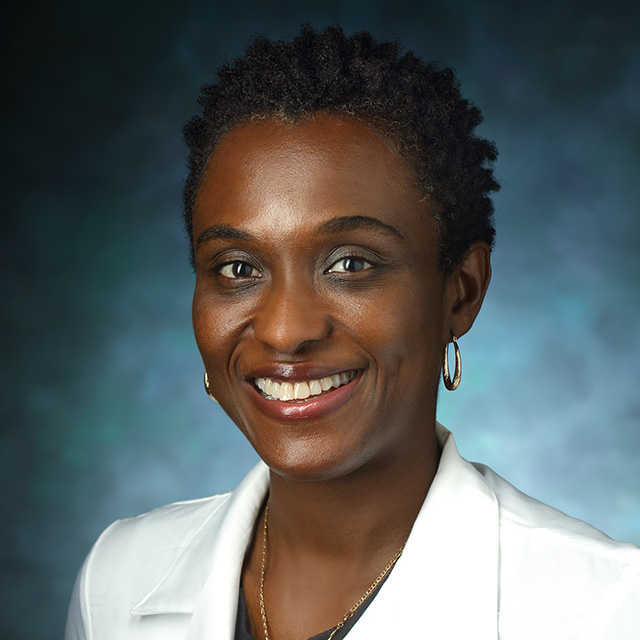Fall Prevention: A Path to Success

The team began by looking at the National Database of Nursing Quality Indicators for falls and identifying which JHHCMC units fell above the benchmark. “We deemed those to be high fall-risk units,” says Marian. “If we could get those units below or even at the benchmark, the whole organization would be at goal."
 Marian Asiedu, MSN, RN, CWCN
Marian Asiedu, MSN, RN, CWCNThe team also used purposeful rounding to address the “four Ps” – pain, position, potty and personal needs. “We started asking patients how often the staff came in and if they were asking about these needs,” says Marian. “Every one to two hours, we want a staff member to check in, so the patient doesn’t attempt to ambulate alone and risk falling.
“Once a week we also conducted preventable harm rounds when we met with the nurse in the patient's room and asked the nurse to talk us through interventions they have implemented to prevent a fall. If there's anything missing in that moment, we can correct it. This also shows the patient that we're doing everything to keep them safe. If the family member was in the room, we involved them in that conversation too and could provide them with education about fall safety in the hospital and how to prevent a fall at home.”
A patient partnership agreement was also piloted on two units to help patients and families play an active role in preventing falls. When a high or moderate fall-risk patient is admitted they receive extra education about fall safety. The nurse explains the mobility goals, why they're a high-fall risk, what equipment we're going to use to help them to mobilize and what activities they're going to be engaged in for the day to prevent a fall as well as improve mobility. Then the patient signs an informal agreement to work with the nursing staff. “We don’t want to do things to our patients – we want to do things with them,” says Marian. “This agreement gets them involved and invested in what we’re doing. We have seen a drastic reduction in falls with this pilot.”
Since each unit is different, fall prevention measures will vary across the hospital. Marian and her team are working on finetuning their methods and rolling out a more widespread program. “It’s about drilling down to see where the loopholes are so we can re-educate, re-invent or re-coach our nurses,” says Marian. “We will do whatever we need to do to meet our goals – even if that means starting over again.”
Select an article:
-
Letter from Ron Langlotz, DNP, Chief Nursing Officer
Welcome to Howard County Medical Center's 2023-2024 biennial Nursing Report.

-
Improving the New Nurse Experience with the Nurse Residency Program
Ranked #3 in the country by nurse.org, the Nurse Residency Program at JHHCMC provides new nurses with the tools and mentorship they need to successfully transition from an academic to a clinical setting.

-
The Nurse Externship Program
The nurse externship program at JHHCMC gives nursing students in their final year of school the opportunity to play an active role in the hospital, gain invaluable hands-on experience across hospital departments.

-
First Nurse Scientist at JHHCMC Drives Research Innovation and Improvement
Nurse scientist Vicki Lowe, Ph.D., RN, is on a mission to support nurses at JHHCMC in navigating the research process and inspire and empower them to spearhead research initiatives.

-
Fall Prevention A Path to Success
Director of Medical and Surgical Nursing Services, Marian Asiedu, MSN, RN, CWCN, and her team helped to identify and implement new safety strategies to improve fall prevention measures across JHHCMC.

-
Bereavement Boxes Offer Comfort to Families
The bereavement box program allows nursing staff to offer enhanced family-centered support and understanding to those who are grieving and navigating end-of-life care at JHHCMC. The development of the program is a wonderful example of cross-department collaboration.

-
Collaboration in Crisis Builds Foundation for the Future
During the COVID-19 pandemic, nurses and providers across all units came together to lend support where it was needed. The experience laid the foundation for improved crisis response and collaboration at JHHCMC once again during a surge.

-
Unifying Communications
Clinical Informatics Manager Kim Rost, R.N., served as a liaison between the JHHCMC administration and nursing department to develop novel communications solutions that improve teamwork and, ultimately, patient safety.

